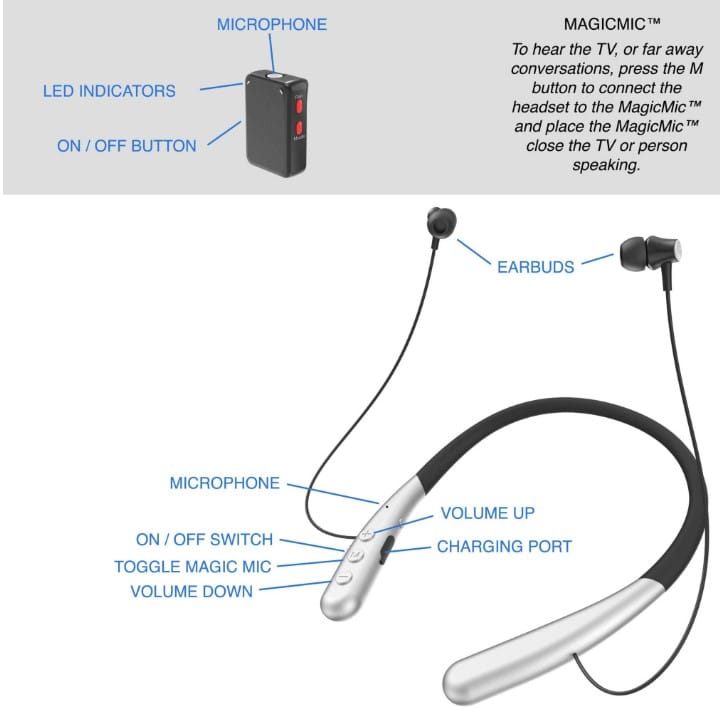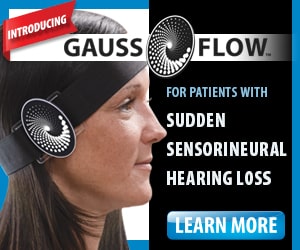by Gina Geissler, Au.D, FAAA
Medical research for many years has reported patient compliance is typically 50% when it comes to listening to their doctors or health care professionals. Is this because they don’t remember? Is this because they are overwhelmed or stressed with the information they are being told or simply because they cannot hear it correctly? The answer remains a mystery.
I have been a private practice doctor of audiology for over 20 years. I sincerely love my job of helping people be able to communicate to the best of their abilities. After I conduct a hearing evaluation in my office and learn that a patient has hearing loss, it has been my common practice to explain the test results and verbally talk to them about their results and make recommendations.
The oxymoron in this situation is I am verbally giving test results and recommendations to someone I just diagnosed with a hearing loss and have documented they have difficulty hearing!
Experience with New Assistive Device
I recently was introduced to ClearCast PAL™, a new assistive listening device and I have been so impressed with it, I have changed my counseling protocols in my office. The ClearCast PAL is a new FDA-registered assistive listening device that has a neckband form factor and 2 different microphones that are useful in different settings.

After I finish a patient’s hearing evaluation, I immediately put a ClearCast on them to communicate the results to them. It’s quick, easy, and effective. I simply put the neckband around their neck and an ear bud in each ear. I turn the wireless microphone on and clip it to my shirt. Once I begin speaking, the microphone picks up my voice and immediately streams my voice directly into the patient’s ears. There is a volume control on the neck loop that I or the patient can very easily adjust to make it louder or softer to be most comfortable for the patient, so they can hear my voice very well. When significant others are present, I can pass the microphone to them or place it on the desk between us and it can then pick up both of our voices.
When using the ClearCast and on my patients with hearing loss, I know they are able to hear me loud and clear when I counseling them about test results and giving recommendations for their personal hearing health care needs. Many times patient’s will react with “wow, I can really hear you.” I simply respond “good, because what I need to tell you and your loved one is very important.”
I would highly recommend all hearing health care practices have these in their office so your patients can hear the important things you need to tell them. ClearCast is an effective and affordable medical device at around a $399 retail price point. Research shows that when patients hear well and understand instructions, they are more likely to have better patient compliance and therefore better overall physical and mental health.

Additionally, the ClearCast has some great benefits for personal and at home use. There is a built-in microphone that works much like a body-worn hearing aid. And there is a second wireless microphone can easily be worn by anyone so their voice can stream into their loved one’s ears who are hard of hearing, up to 60 feet away. It is very easy to place the microphone near the TV speaker and then the TV can also stream into the patient’s ears, giving them excellent speech clarity of what the people on TV are saying and allowing everyone in the room to listen to the TV at a comfortable volume. In a small group setting, the microphone can be placed on a table and pick up voices of the people sitting around the table.
A ‘Bridge Solution’
I believe this product can change the way hearing health care professionals talk to and counsel their patients. I take great pride in knowing my patients can actually hear me, when I am talking to them. This device is also a great “bridge solution” for people whose hearing is not quite as sharp as it used to be, but not significant enough where they would need or want custom hearing aids. At the recent AAA meeting in Atlanta, it was mentioned that 70% of people that bought an OTC hearing aid had seen an audiologist prior to purchase. The ClearCast allows an audiologist to provide an amplification solution to those patients that are ‘tested not sold’ and establishes a relationship that will lead to future hearing aid sales.
Elderly patients with vision or dexterity challenges are also great candidates for the ClearCast. Often elderly patients with other medical challenges can make managing and maintaining custom hearing aids difficult. ClearCast is a great hearing solution for them and their families.
The features of streaming TV, hearing one’s significant other well, hearing in small groups, hearing in the car, hearing their doctor, and even hearing someone down the aisle in the grocery store are all ehanced when wearing a ClearCast.
Finally, when discussing end of life care, my experience has taught me that what people want most is to be able to say “I love you” or say their good-byes and know that their loved one heard their voice. The ClearCast is the answer for these extremely sensitive and emotional times. Patients in nursing homes and hospice settings could really benefit from this device. At the end of the day, all humans want to feel connected and heard by their friends and family and ClearCast provides this!
About the Author
Gina Geissler, Au.D, is a board certified Doctor of Audiology specializing in amplification for hearing loss in the adult and pediatric populations. She evaluates and treats people with tinnitus (ringing in the ears) and vertigo (dizziness). She also evaluates and treats those with hearing loss related to illness, ageing, noise-exposure, chemotherapy and diabetes. Dr. Geissler received her bachelor’s degree from Marquette University in Milwaukee, WI and her Doctor of Audiology degree from Central Michigan University in Mt. Pleasant, MI. Her clinical Internship included training at the Veteran Administration Hospital in Tucson, AZ and overseas in Guatemala, Honduras, and the Dominican Republic. Her residency training was completed at Illinois Masonic Medical Center in Chicago, IL.






